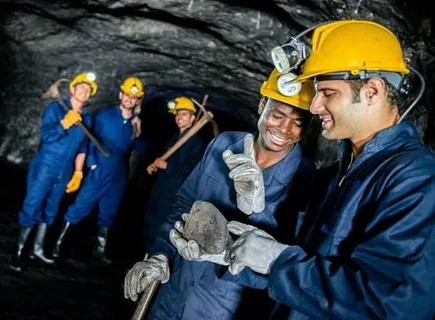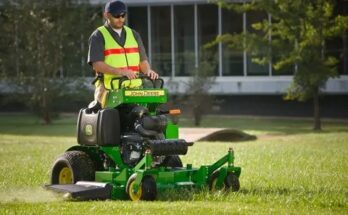U.S Mining Jobs
The United States has a rich history of mining, dating back to the 19th-century gold rushes that shaped its economic and cultural landscape. Today, the mining industry remains a cornerstone of the economy, providing essential raw materials for everything from smartphones to renewable energy infrastructure. Despite challenges like automation and environmental concerns, mining jobs in the US offer competitive salaries, career advancement, and a chance to work in a sector critical to technological innovation. This guide explores the state of mining employment, from traditional coal mines to cutting-edge lithium extraction, and what aspiring workers need to know to thrive in this dynamic field.
The Role of Mining in the US Economy
Mining contributes over $900 billion annually to the US economy, supplying materials for construction, manufacturing, and energy production. Key sectors include:
- Coal Mining: Once dominant, now declining due to shifts toward renewable energy.
- Metal Ore Mining: Extraction of copper, gold, iron, and zinc.
- Nonmetallic Mineral Mining: Includes limestone, phosphate, and salt.
- Critical Minerals: Lithium, cobalt, and rare earth elements for batteries and electronics.
The industry employs approximately 625,000 workers directly, with indirect jobs in manufacturing and logistics adding millions more.
Types of Mining Jobs
Mining offers diverse roles, from hands-on labor to high-tech positions:
- Underground Miners: Operate machinery and extract resources in subterranean environments.
- Surface Miners: Work in open-pit mines, quarries, or placer mining operations.
- Engineers: Geological, mining, and safety engineers design extraction processes and ensure compliance.
- Equipment Operators: Handle drills, bulldozers, and haul trucks.
- Safety Officers: Enforce OSHA and MSHA regulations to prevent accidents.
- Technicians: Specialize in surveying, environmental monitoring, or metallurgy.
Demand for Mining Jobs
While coal jobs have plummeted (from 90,000 in 2012 to 40,000 in 2023), demand is rising in other areas:
- Critical Minerals: Lithium demand is expected to grow 500% by 2030, driven by electric vehicles (EVs).
- Copper and Nickel: Essential for renewable energy infrastructure and EVs.
- Construction Aggregates: Sand, gravel, and crushed stone for infrastructure projects.
States like Nevada (gold, lithium), Arizona (copper), and Wyoming (coal, trona) are hotspots for mining activity.
Salary Expectations
Salaries vary by role, experience, and location:
- Entry-Level Positions:
- Miner/Laborer: 40,000–55,000/year
- Equipment Operator: 45,000–60,000/year
- Skilled Roles:
- Mining Engineer: 80,000–120,000/year
- Safety Manager: 75,000–110,000/year
- Specialized Technicians:
- Drone Surveyor: 60,000–85,000/year
- Metallurgist: 70,000–100,000/year
Unionized positions (e.g., United Mine Workers of America) often include higher wages, health benefits, and pensions.
Education and Qualifications
- Entry-Level Jobs: High school diploma or GED; MSHA safety certification (mandatory).
- Technical Roles: Vocational training in heavy machinery operation or welding.
- Engineering/Geology: Bachelor’s degree in mining engineering, geology, or environmental science.
- Certifications:
- MSHA Part 48 (Surface) or Part 46 (Underground): Required for safety compliance.
- CPR/First Aid: Often needed for emergency response roles.
Challenges in the Industry
- Physical Risks: Exposure to collapses, explosions, and respiratory diseases (e.g., silicosis).
- Environmental Regulations: Stricter laws on emissions and land reclamation.
- Automation: Autonomous haul trucks and AI-driven drilling reduce manual labor needs.
- Market Volatility: Job stability tied to global commodity prices (e.g., copper, coal).
Opportunities for Advancement
- Leadership Roles: Transition from miner to shift supervisor or mine manager.
- Specialization: Train in emerging areas like lithium extraction or sustainable practices.
- Consulting: Advise companies on efficiency, safety, or regulatory compliance.
- Entrepreneurship: Launch businesses in equipment supply or mine reclamation.
Future Trends Shaping Mining Jobs
- Green Mining: Adoption of electric vehicles (EVs) in mines and renewable energy-powered operations.
- Automation and AI: Remote-controlled machinery and predictive maintenance systems.
- Circular Economy: Recycling metals from e-waste to reduce reliance on virgin materials.
- Government Incentives: The Inflation Reduction Act (IRA) boosts critical mineral production for clean energy.
Workers with skills in robotics, data analysis, or environmental science will be in high demand.
Geographical Hotspots
- Nevada: Gold (76% of US production) and lithium (only active mine in Clayton Valley).
- Arizona: Leading copper producer (75% of US output).
- Alaska: Zinc, gold, and rare earth elements.
- Appalachia: Remaining coal jobs in West Virginia and Kentucky.
How to Apply for Mining Jobs
- Job Boards: Use Indeed, Careermine, or company sites (e.g., Freeport-McMoRan, Barrick Gold).
- Apprenticeships: Programs through unions or community colleges.
- Networking: Attend industry conferences like MINExpo or join groups like SME (Society for Mining, Metallurgy & Exploration).
- Government Resources: Explore training grants via the Department of Labor.
Legal Rights and Protections
- Safety Standards: MSHA mandates regular inspections and worker training.
- Anti-Discrimination Laws: Protections under the Equal Employment Opportunity Commission (EEOC).
- Unions: Advocacy for fair wages and working conditions (e.g., United Steelworkers).
Living in Mining Communities
- Cost of Living: Lower in rural areas (e.g., housing in Elko, NV, averages 300,000vs.700,000 in urban centers).
- Lifestyle: Tight-knit communities with outdoor recreational opportunities.
- Challenges: Limited healthcare and educational facilities in remote regions.
U.S Mining Jobs
Mining jobs in the US are evolving, blending tradition with innovation to meet the demands of a green economy. While the sector faces challenges, it offers resilient career paths for those willing to adapt to new technologies and sustainability practices. From the lithium-rich deserts of Nevada to the copper mines of Arizona, mining remains a vital industry that powers progress. For job seekers, the key to success lies in continuous learning, safety awareness, and a passion for resource stewardship.



